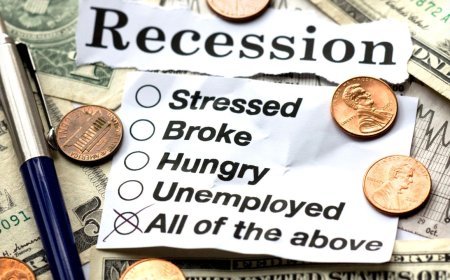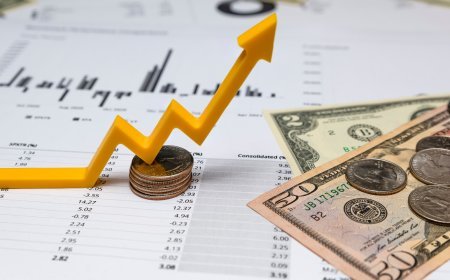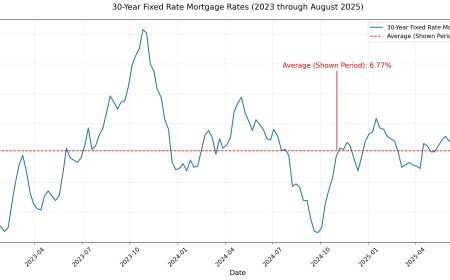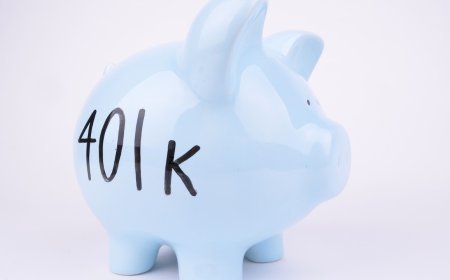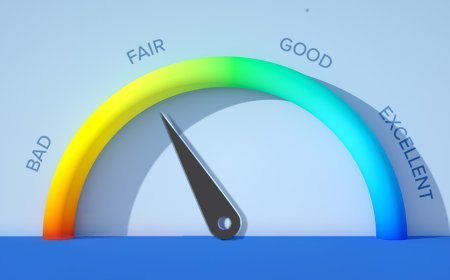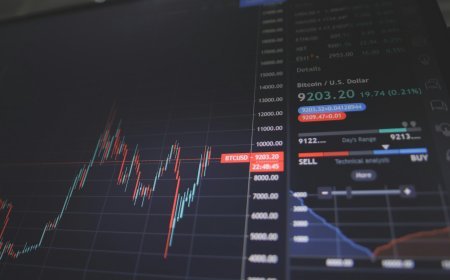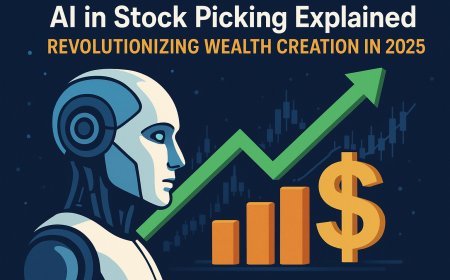How Compound Interest Works: A Guide to Growing Your Wealth
This article explains the mechanics and power of compound interest, a financial concept that drives exponential wealth growth by earning interest on both the initial investment and accumulated interest. It breaks down the compound interest formula, illustrates its real-world applications (e.g., savings accounts, investments, debt), and highlights key factors like time, compounding frequency, and interest rates. The piece also offers practical tips for 2025, such as starting early, using high-yield accounts, and minimizing fees, while addressing risks like market volatility and taxes. Real-world examples and tools for tracking growth make it accessible for beginners and seasoned savers alike.
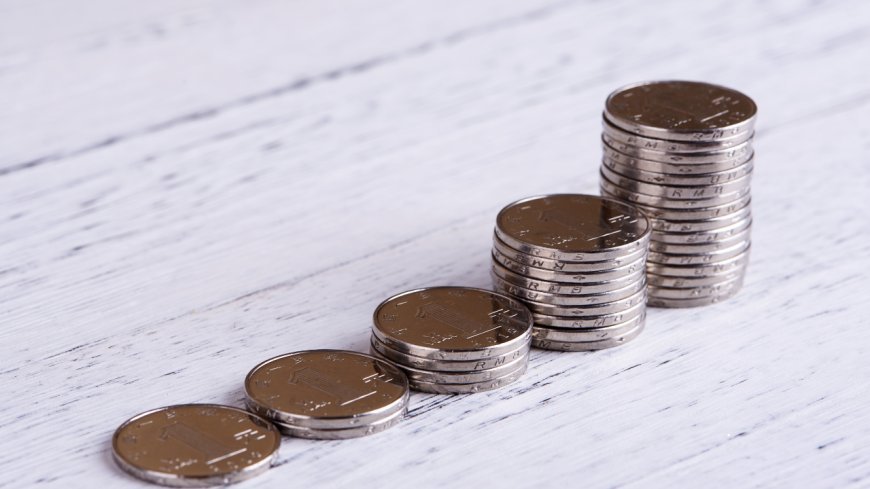
Compound interest is often called the "eighth wonder of the world" for its ability to turn small savings into substantial wealth over time. Whether you're saving for retirement, a home, or a dream vacation, understanding compound interest is key to making informed financial decisions. This article explains what compound interest is, how it works, its benefits, and practical ways to harness its power in 2025.
What Is Compound Interest?
Compound interest is the process of earning interest not only on your initial investment (principal) but also on the interest that accumulates over time. Unlike simple interest, which is calculated only on the principal, compound interest grows exponentially because each interest payment adds to the base amount earning future interest.
For example, if you invest $1,000 at a 5% annual interest rate, simple interest would earn $50 per year, totaling $1,500 after 10 years. With compound interest, you earn interest on the growing balance, potentially resulting in $1,628.89 after 10 years (assuming annual compounding). The difference becomes more dramatic over longer periods.
The Compound Interest Formula
The formula for compound interest is:
A = P (1 + r/n)^(nt)
Where:
-
A = the future value of the investment
-
P = the principal (initial investment)
-
r = the annual interest rate (as a decimal, e.g., 5% = 0.05)
-
n = the number of times interest is compounded per year
-
t = the number of years
For example, investing $5,000 at a 6% annual interest rate, compounded monthly (n=12) for 10 years:
A = 5000 (1 + 0.06/12)^(12*10) = 5000 (1.005)^120 ≈ $9,071.00
This shows how frequent compounding (monthly vs. annually) accelerates growth.
How Compound Interest Works in Practice
Compound interest thrives on two key factors: time and compounding frequency. The longer your money is invested, and the more frequently interest is compounded, the greater your returns.
Key Factors Affecting Compound Interest
-
Time: The earlier you start, the more time your money has to grow. For instance, $10,000 invested at age 25 at 7% annual interest (compounded annually) grows to $149,744.58 by age 65. Starting at age 35 yields only $76,122.55—a difference of over $73,000.
-
Compounding Frequency: Interest can be compounded annually, semi-annually, quarterly, monthly, or even daily. More frequent compounding increases returns because interest is added to the principal sooner. For example, $10,000 at 5% compounded annually grows to $16,288.95 in 10 years, but with monthly compounding, it reaches $16,453.09.
-
Interest Rate: Higher rates amplify growth. A 7% rate versus a 4% rate on $10,000 over 20 years can mean a difference of tens of thousands of dollars.
-
Contributions: Regular deposits, like monthly savings, supercharge compound interest by increasing the principal over time.
Real-World Applications
Compound interest applies to various financial products:
-
Savings Accounts: High-yield savings accounts offer 4–5% interest in 2025, with daily or monthly compounding.
-
Certificates of Deposit (CDs): CDs lock in your money for a fixed term at a guaranteed rate, often compounding monthly.
-
Investment Accounts: Stocks, bonds, or mutual funds in retirement accounts (e.g., 401(k), IRA) grow through compound returns, though rates vary due to market fluctuations.
-
Debt: Compound interest also works against you in loans or credit card debt, where unpaid interest adds to the balance, increasing what you owe.
Benefits of Compound Interest
-
Exponential Growth: Small, consistent investments grow significantly over time. For example, saving $200/month at 6% interest from age 25 to 65 yields over $300,000.
-
Passive Wealth Building: Once invested, your money grows without additional effort.
-
Inflation Protection: Compounding at rates above inflation (e.g., 3% in 2025) preserves purchasing power.
-
Flexibility: Works for any investment size, from $100 to $100,000.
Challenges and Risks
-
Time Commitment: Significant growth requires decades, which may not suit short-term goals.
-
Market Risk: Investments like stocks or mutual funds aren’t guaranteed and can lose value, unlike fixed-rate savings accounts or CDs.
-
Fees: High fees in managed funds can erode compounding benefits. Look for low-cost options like index funds.
-
Taxes: Interest earnings may be taxable, reducing net returns unless in tax-advantaged accounts like IRAs.
Practical Tips to Maximize Compound Interest in 2025
-
Start Early: Even small amounts invested in your 20s can grow substantially by retirement. Use apps like Acorns or Wealthfront to automate micro-investments.
-
Choose High-Yield Accounts: Opt for high-yield savings accounts (4–5% APY) or low-cost index funds averaging 6–8% annual returns.
-
Contribute Regularly: Set up automatic deposits to increase your principal over time.
-
Reinforce Gains: Reinvest dividends and interest rather than withdrawing them.
-
Minimize Fees: Select low-fee investment platforms (e.g., Vanguard, Fidelity) to preserve returns.
-
Use Tax-Advantaged Accounts: Contribute to 401(k)s or IRAs to defer taxes and maximize compounding.
-
Avoid Debt Traps: Pay off high-interest credit card balances to prevent compound interest from working against you.
Example: The Power of Starting Early
Consider two savers, Alex and Bailey:
-
Alex invests $5,000 at age 25 in a mutual fund with a 7% annual return, compounded monthly. By age 65, it grows to $87,385.56.
-
Bailey starts at age 35 with the same $5,000 and 7% return. By age 65, their investment is only $44,440.26.
Starting 10 years earlier nearly doubles Alex’s wealth, highlighting the importance of time.
Tools to Track Compound Interest
-
Online Calculators: Websites like Investor.gov or Bankrate offer free compound interest calculators to project growth.
-
Budgeting Apps: Apps like Monarch Money or YNAB integrate investment tracking with budgeting, showing how your savings grow.
-
Brokerage Platforms: Fidelity, Schwab, or Robinhood provide real-time portfolio tracking with compounding projections.
Final Thoughts
Compound interest is a powerful tool for building wealth, driven by time, frequency, and consistent contributions. By starting early, choosing high-yield or low-fee investments, and leveraging tax-advantaged accounts, you can maximize its potential in 2025. Whether saving $50 a month or investing a lump sum, understanding and applying compound interest can transform your financial future. Explore high-yield savings accounts or low-cost index funds today to start harnessing this "wonder" of finance.
For more resources, visit investor.gov or check your bank’s savings options to find the best compounding opportunities.
What's Your Reaction?
 Like
0
Like
0
 Dislike
0
Dislike
0
 Love
0
Love
0
 Funny
0
Funny
0
 Angry
0
Angry
0
 Sad
0
Sad
0
 Wow
0
Wow
0


